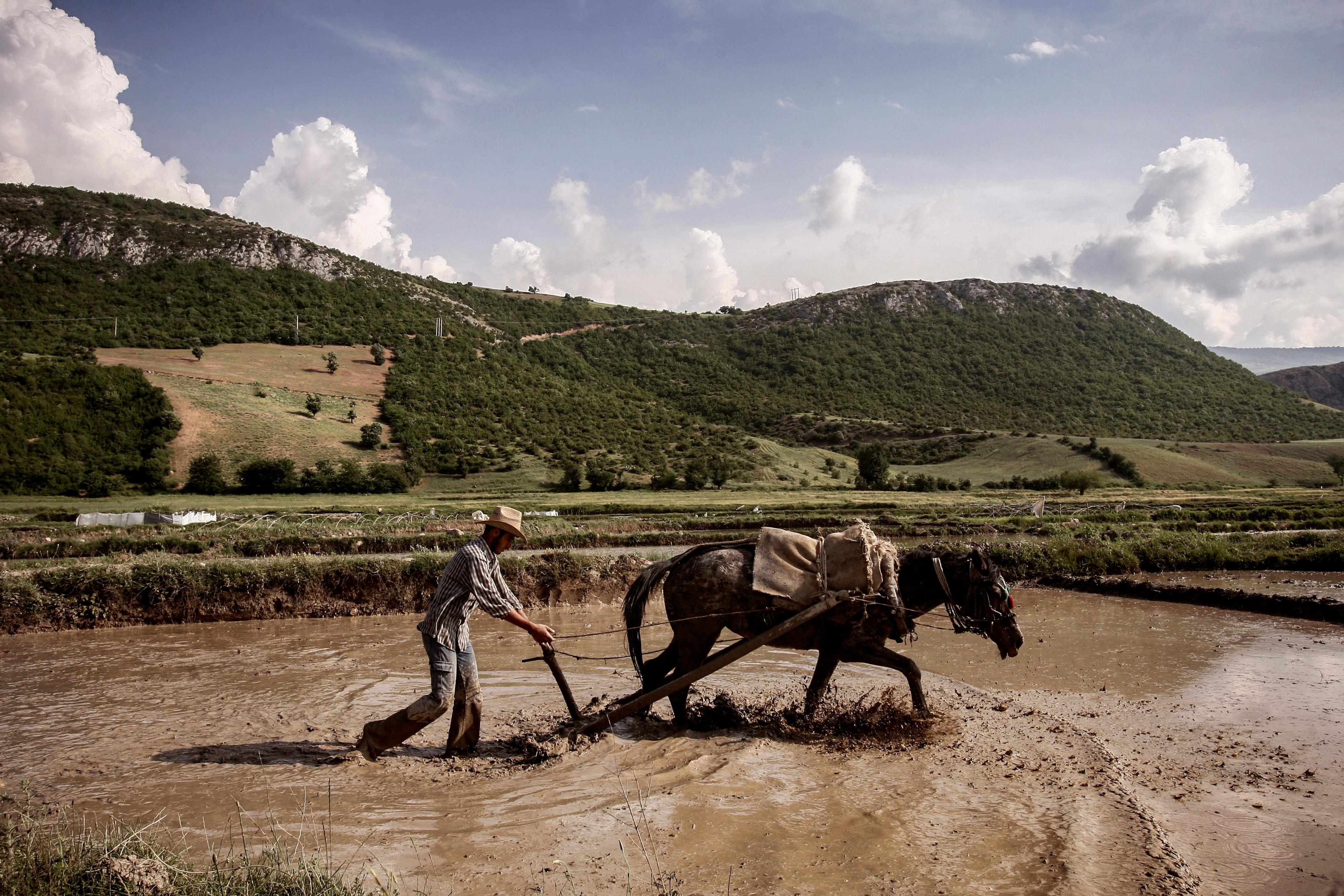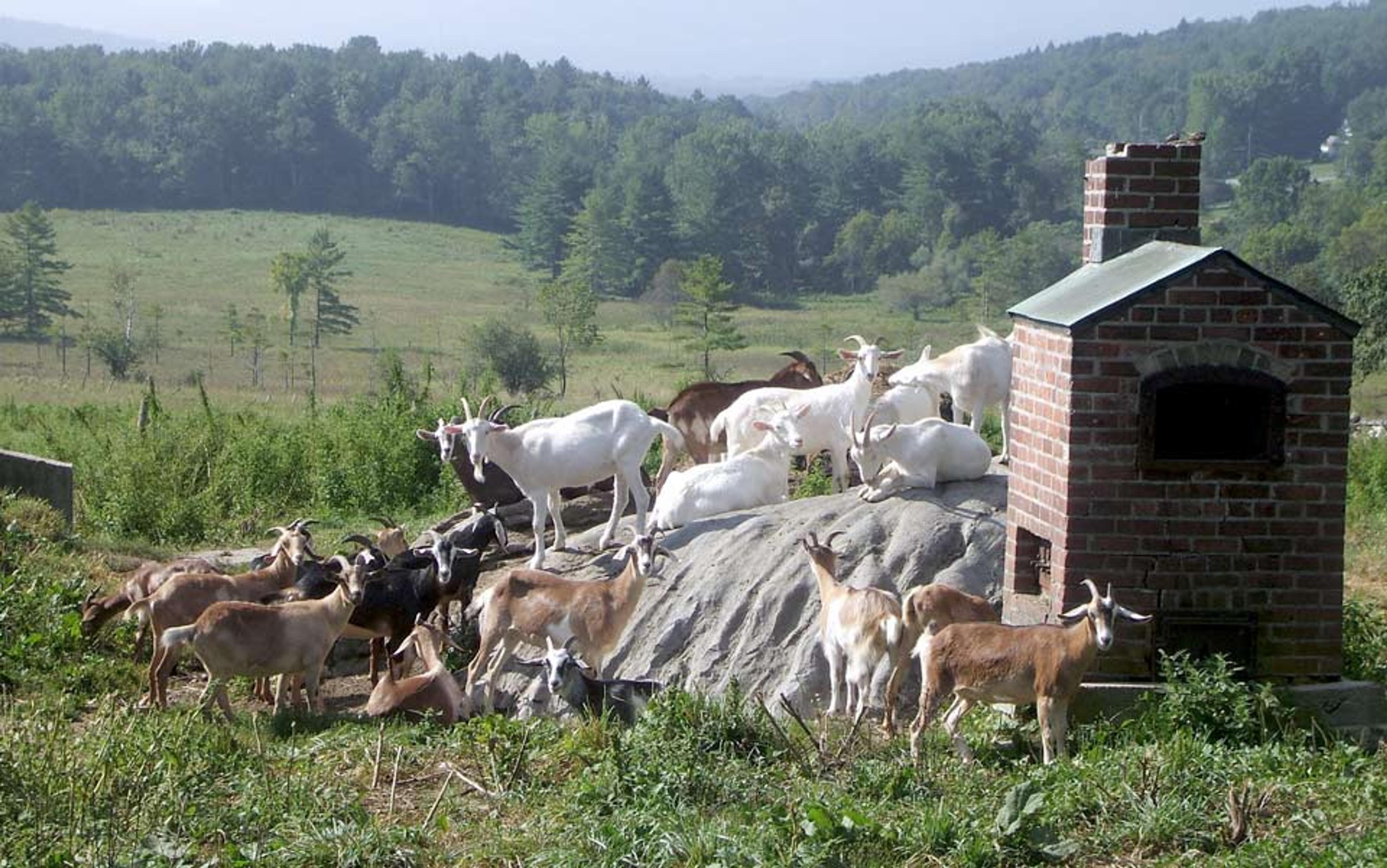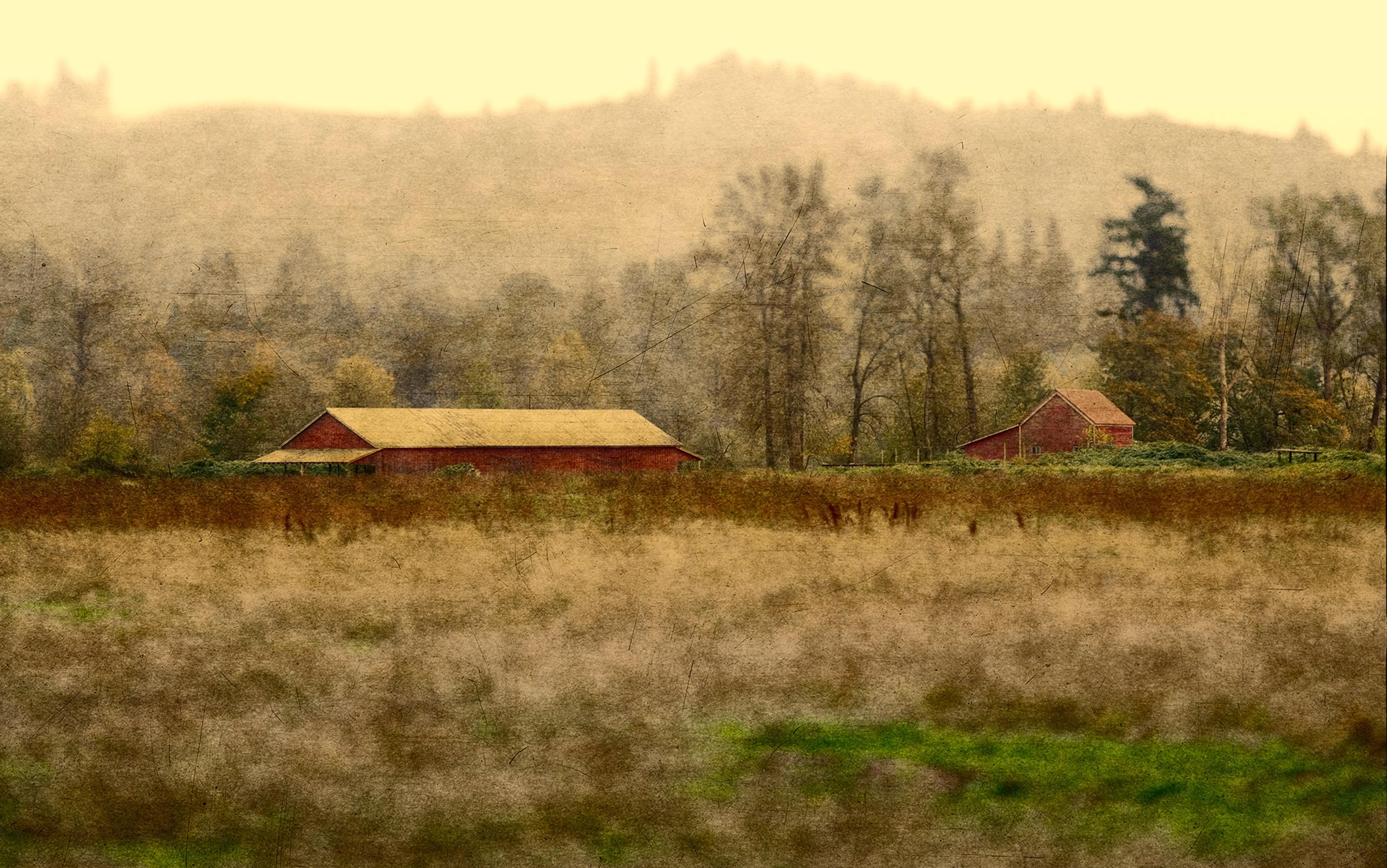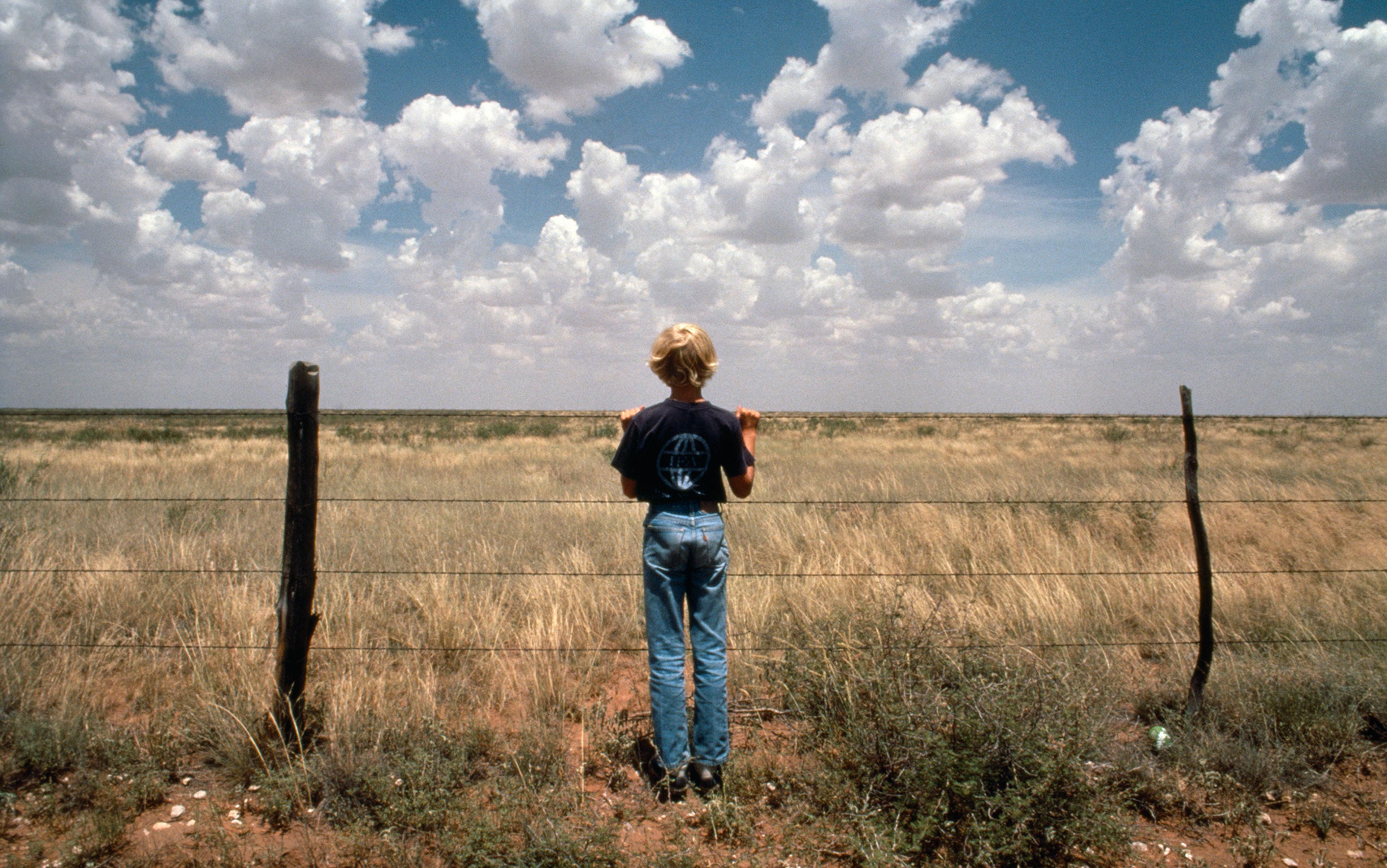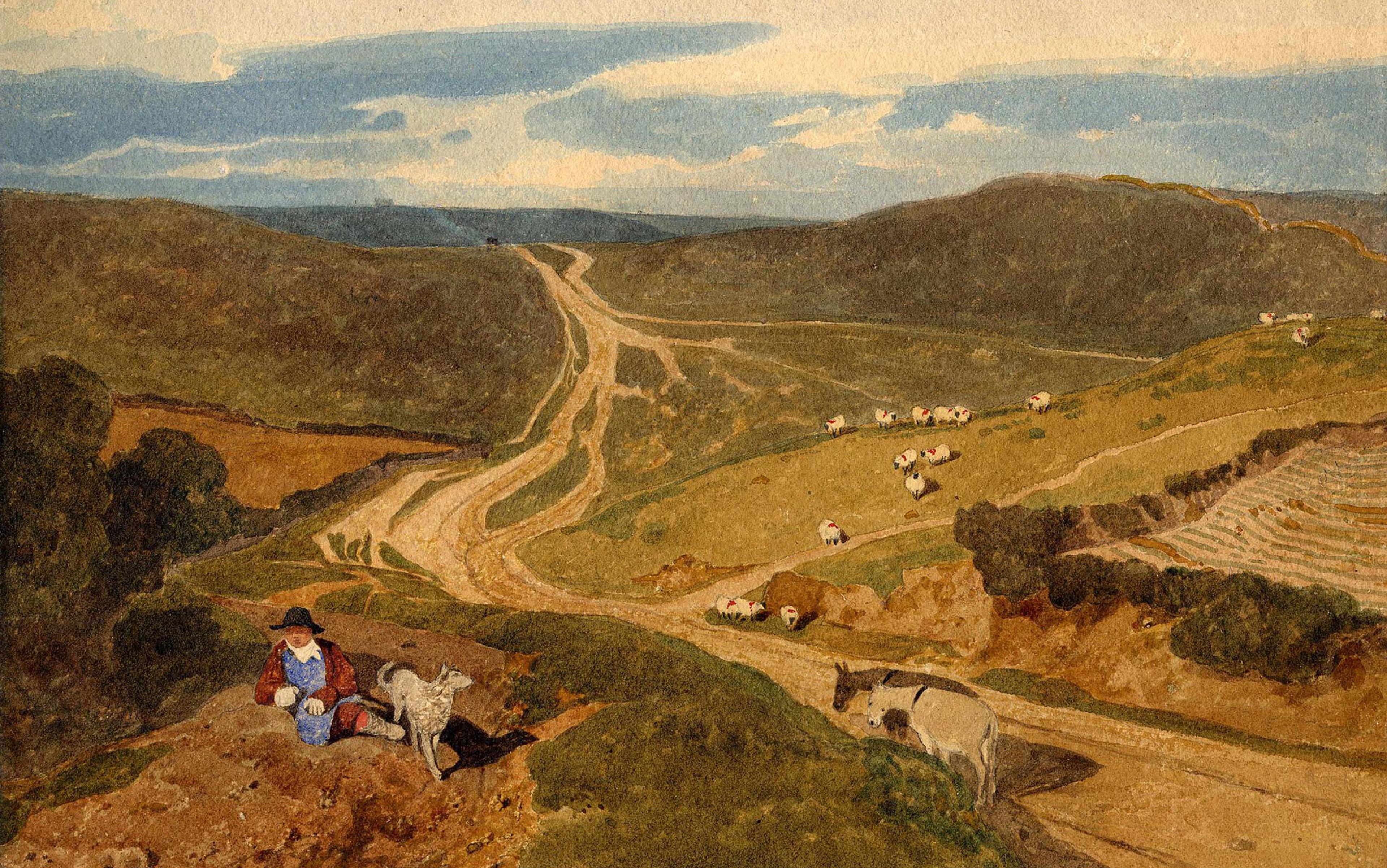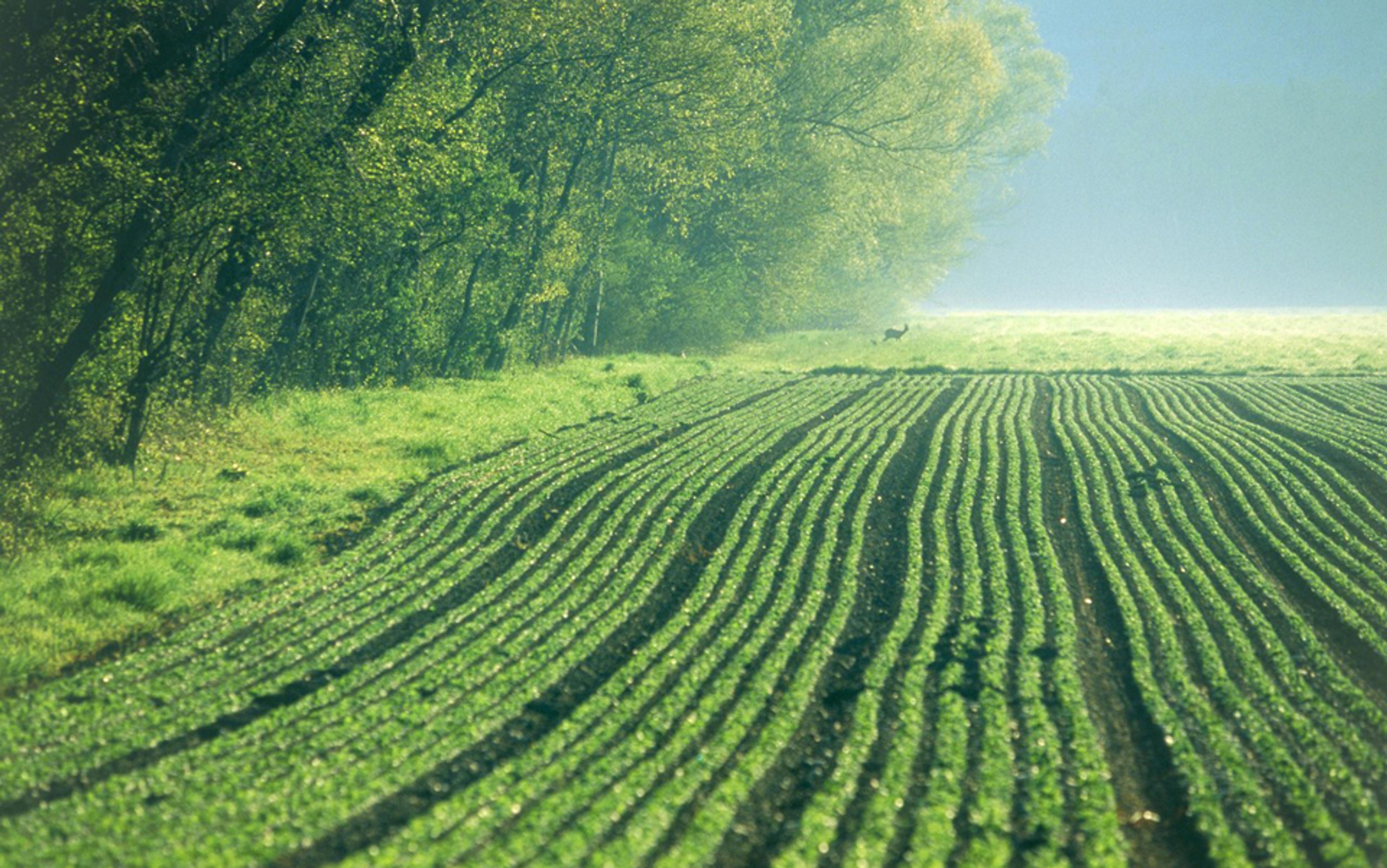In 2007, the United Nations released a State of the World Population report noting that human life on Earth was quietly passing a tremendous benchmark. In 2008, the proportion of people residing in the countryside was falling – for the first time in history – below 50 per cent. Today, just 42 per cent of humanity lives in the countryside.
For many city dwellers, the urbanisation of our species is natural and inexorable. Extrapolating from past trends, they imagine a future in which the great majority has abandoned the land, leaving it bucolic, automated and empty. In the process, they predict – with some relief! – the imminent extinction of an ancient character: the peasant.
That word is avoided in polite conversation; in many languages, it is used as a term of abuse or contempt. Because peasants themselves are seen as an embarrassing vestige, the antithesis of ‘progress’. Whether Right or Left, Western thinkers have taught that, in order to become modern, societies have to get rid of their peasants. While Adam Smith looked forward to peasants giving way to landowners (for then ‘the land … would be much better improved’), Karl Marx foresaw their replacement by modern socialist management. It has been taken for granted that agriculture will eventually be monopolised by large capital and machinery, and cities will absorb the majority of the human population.

The Gleaners by Jean-François Millet (1857). Courtesy and © Musée d’Orsay. RMN-Grand Palais/Patrice Schmidt
Even in industrialising Europe, the process was not exactly like that. Yes, the traditional countryside was largely destroyed between the 18th and 20th centuries – but the resulting exodus was far greater than could be absorbed by urban factories. Sixty million Europeans had to escape, instead, to the New World. But, in any case, Europe plays a unique role in capitalist history, and it is wrong to extrapolate from it. Other regions have followed other paths.
In large parts of Africa, Latin America and Asia, urbanisation is slowing. Most of those who will enter factories have already done so. Those who value the securities of village life, meanwhile, have little appetite for urban slums, isolation and hypercompetition. Therefore, while humanity was urbanising at a rate of 1.06 per cent per year between 1950 and 1970, that rate has now dropped to 0.74 per cent, and it will fall to just over 0.6 per cent by 2030. Since the world population has tripled since 1950, absolute rural numbers remain greater than ever before. By my calculations, as many as 2 billion people live in the countryside of Africa, Latin America and Asia, where small family farms dominate. After 300 years of ‘modernisation’, in short, peasants still constitute as much as one-quarter of our species, vastly outnumbering assembly-line workers, miners, office drones or taxi drivers.

A M Menkethana, 59, returning from her rice field in Weweldigiliya, Sri Lanka. Photo by GMB Akash/Panos Pictures
Peasants are defined by family farms, usually 10 acres or less, whose output is optimised both for subsistence and for cash income. The work is carried out primarily by (unpaid) family labour. Far more than farmers in rich countries – many of whom are effectively state employees – peasants are entirely exposed to the fluctuations of climate and markets; their fortunes can vary greatly from one year to the next.
Peasants are fully integrated with the 21st-century economy, which could not operate without their production of sugar, cotton, cocoa and other essential commodities. Although they control less than one-quarter of the world’s agricultural land, peasant farming is highly efficient, and estimates suggest 70 per cent of the world’s population depends on them for some or all of their food. In many crucial sectors, peasant production is also more favoured by industry, and more suited to social conditions. Peasant agriculture is better than industrial alternatives, also, at managing soil health, water resources and biodiversity, so it is widely seen as a shield against climate change. Without peasants, in short, the global economy could not function, and our natural systems would collapse.
Life still depends on the peasantry. We are all affected, therefore, by the fact that the peasantry is today in an acute crisis. A crisis that rarely receives adequate attention in public discussion.
On rare occasions, the countryside does make it to the front page. In September 2020, large-scale farmer protests erupted in India following the passage of new legislation that gave corporations a greater role in agricultural markets. Farmers across multiple states – especially Punjab and Haryana, where many relied on the state to procure their wheat and rice – staged demonstrations and blocked highways to New Delhi. Delhi is a global media hub; naturally, there was widespread coverage.

Protesting farmers burning an effigy of the farm laws at a protest site outside Delhi. Photo by Harsha Vadlamani/Panos Pictures
Such coverage is rare; farmer unrest, however, is endemic. In November and December 2020 – while the roads to Delhi were blocked by tractors – soldiers in Peru were firing at farmers protesting a law that absolved agribusiness from obligations to workers. In Uzbekistan, also in 2020, farmers protested the cluster system, whereby land was forcibly given over to corporate clusters, which were usually run by individuals close to the political elite. Over the past five years, serious farmer protests have occurred in Argentina, Brazil, Colombia, Ecuador, Ghana, Kenya, Indonesia, Nepal, Iran, Pakistan, the Philippines, Uganda – and the list goes on.
Much of what is usually reported as ‘terrorism’ or ‘militancy’ has its roots in the collapse of the countryside
Behind the protests lies an even greater swell of invisible discontent. In my travels through the villages of Latin America, Africa and Asia, I have everywhere encountered the fury of farmers faced with assaults on their land, and with policies designed to allow agribusiness and industrial processors to capture more and more of their income. ‘There is no point the government offering poverty relief to farmers,’ a farming organiser told me in India, ‘when your policies are keeping them in slavery. You first have to unchain the farmers’ arms and legs.’
Sometimes, the peasant crisis hits the media for other reasons. The Arab Spring uprisings of the early 2010s drew strength from agrarian protests in the Middle East and North Africa – even if the farmers were quickly marginalised after the fact. Much of what is usually reported as ‘terrorism’ or ‘militancy’ also has its roots in the collapse of the countryside. Boko Haram and other militant groups operating along the southern edge of the Sahara draw their forces from farmers and herders displaced by desertification, climate change and the closure of traditional nomadic routes. ‘Jihadist groups,’ writes one expert, ‘have realised that certain groups have been left to manage the devastating impacts of climate change on their traditional livelihoods on their own,’ which has ‘created fertile grounds for recruitment.’
Mass migration is another symptom of this crisis. Most rural refugees head for the nearest metropolis, but tens of millions are driven across international borders. The caravans of migrants leaving Guatemala, El Salvador and Honduras for Mexico and the United States are largely made up of such refugees. Other routes lead from Burkina Faso, Mali, Niger and Chad through North Africa to Europe, and from East Africa to western Asia.

Valli Kupuswamy, 55, weeding her paddy field. Photo by Sanjit Das/Panos Pictures
Then there is suicide. According to farmer advocates I have interviewed, more than 400,000 Indian farmers have taken their own lives. The greatest concentration has been in the cotton-growing regions of Maharashtra; cotton is a critical global resource, whose price is of acute political concern. A sophisticated mesh of laws and markets induces cotton farmers to continue selling below the cost of production – and so to enter a debt spiral from which they often find no mortal exit.
These are among the symptoms of the crisis of the global peasantry in the neoliberal era. We should be in no doubt: this is a political crisis. Everywhere, states are breaking their contract with peasants, and turning instead to anti-agrarian alliances with global corporations, local bigwigs, organised crime and gangsterism. Unchecked, this crisis will deliver terrifying consequences; it may even threaten our survival as a species. It is, in my view, the most important story of the 21st century.
For most of history, peasants supplied the basic economic resource: without them, there was no state. A special bond therefore existed between peasants and kings. Successful rulers – for instance, in China, Persia, India, Egypt, Arabia, Ethiopia, West Africa, the Andes – nurtured the agrarian economy by instigating irrigation works, protecting peasant landholdings, guaranteeing crop prices, feeding populations when harvests failed, and controlling merchants, middlemen and land speculators. Many such systems were destroyed by European colonialism; restoring them was a major objective of Asian and African postcolonial governments. Similar issues gripped 20th-century Latin America, where agrarian democratic movements were continually pitted against landowning oligarchies and anti-Communist alliances.

Valle de los Ríos Apurímac coca farm in Ene y Mantaro (Peru). Supplied by the author
In the decades leading up to 1980, many developing countries saw uncompromising and dramatic agrarian reform. Governments redistributed land, ensured farmers had firm titles, and protected them from the need to sell in times of hardship. Seeds became a critical national resource; states set up seed banks and research centres to preserve the seed heritage, develop high-yield varieties, and guarantee supply. States also formalised agricultural markets, set minimum prices, and often themselves became procurers of last resort. At their best – in South Korea, for instance, or Mexico – such strategies enhanced both standards of living and agricultural output.
Many of those reforms were overturned during the neoliberal restructuring of the 1980s and ’90s. Engineered by such agencies as the World Bank, International Monetary Fund and World Trade Organization, this process forced states to reorganise themselves around the competition for global capital. They therefore established new alliances, not only with those agencies, but crucially with global agribusiness. As a result, significant control of rural affairs has been handed to international banks and corporations. Today’s peasant crisis springs from there.
For many peasants, land represents economic security and heritage, ancestors and the generations to come
This is not to say that global markets are replacing peasant farming with more ‘modern’ techniques. It is true that, in some crop sectors, plantations have replaced small farms. Wheat production, for instance, can be carried out on a large scale with little human labour, using mechanisation and typically high inputs of fossil fuels and fertilisers; such techniques have been generalised from Mexico and Ukraine to Kazakhstan and India. Oil palms, too: in parts of southeast Asia, small farmers have been forcibly dispossessed, and then brought back as wage labourers on corporate oil-palm plantations. And chickens: poultry megazones in southern China – where poultry farming was previously a peasant preserve – now concentrate close to a billion chickens in factory-like conditions.
Not all agriculture, however, can be industrialised. Rice, which is the staple for half the planet, is ill-suited to big plantations; it requires intensive human intervention and is best grown on small family farms. Despite decades of corporate influence, therefore, rice is still produced by about half a billion peasants. The same goes for other essential crops. Cotton production has been mechanised in the US and Europe, but the quality suffers, which is why peasant production continues to dominate; small family farms in India and China contribute by far the largest proportion of global supplies.

A cotton farmer harvesting in Maharashtra, India. Supplied by the author
Not only do peasants have essential skills, they are also, from the corporate perspective, desirable partners – precisely because they are small, politically weak and easy to coerce. In some sectors, corporations have even made the profitable discovery that peasants – whose first commitment is to the land – will continue to farm at a loss. The neoliberal reorganisation of the countryside has not, therefore, eradicated the peasantry. Instead, peasants have been legally reconstituted in such a way as to maximise efficiency and profit. In the process, states that had previously stood with their populations against multinational corporations – which they often viewed as a neocolonial influence – have switched sides, aligning with large capital against their agrarian masses.
The first focus of neoliberal reform in the countryside has been to turn the global peasantry into agribusiness consumers. Seeds were at the heart of this: under the banner of World Trade Organization property protections, international foundations and funding agencies persuaded developing countries to illegalise traditional seed saving and exchange, and to dismantle state seed banks. Farmers were therefore dependent on corporate products – which often lasted only one season, and so could not be saved. Small farmers in many countries have protested against the resulting loss of ‘seed sovereignty’ and biodiversity. Thousands of Ghanaian farmers, for instance, protested the 2013 Plant Breeders’ Bill which advanced agribusiness interests by criminalising farmers who saved seeds for planting the next year; the bill was withdrawn under pressure, but reintroduced in 2020 under a different name.

A farmer working at the rice harvest in Goseong-gun, South Korea. Photo by Björn Steinz/Panos Pictures
Proponents of corporate seeds often point to the Green Revolution, a 1970s triumph of American laboratories and foundations. This was built on genetically engineered high-yield seed varieties allied to intensive irrigation and fertilisers. Its legacy is dubious indeed: in the state of Punjab, the home of India’s Green Revolution, agricultural land is saturated in chemicals, aquifers are disastrously depleted, and farmers are locked into an ever-rising cost cycle. In the era of the climate crisis, however, peasants themselves are desperate to find more resilient, higher-yielding seeds. With alternative seed sources removed, corporations have enjoyed a bonanza. Bayer (Germany) and Corteva (US) control 80 per cent of patents for genetically modified seeds. Allied to seeds are corporate fertilisers and pesticides; along with ChemChina and Sinochem (China) and BASF (Germany), for instance, those same companies control about 60 per cent of the global pesticide market.
By now, the global peasantry spends hundreds of billions of dollars each year on industrial seeds and chemicals. While farm production is unquestionably higher as a result, this expenditure is dangerously out of phase with peasant income. Traditionally, peasants have tried as much as possible to do without cash, which usually arrived in bulk at harvest season. They spent little on seeds and fertilisers, and they fed themselves, as much as possible, from their own resources. Today, peasants need to put up significant amounts of cash at the time of sowing, and throughout the growing season, in order to get to harvest.
Much of the world’s peasantry is now victimised both by free markets and by state-controlled socialist hangovers
Climate change also forces many peasants to resow several times, raising the cost of cultivation, sometimes by a lot. Since they are also spending far greater amounts on such regular expenses as children’s education, most of this cash needs to be borrowed. Most governments have agricultural credit schemes, but some peasants lack the collateral and paperwork to cover their needs in this way. Others quickly exhaust their potential and must seek loans elsewhere. Hence the enormous importance, in Asia and Africa especially, of rural moneylenders. Often charging 10 per cent interest or more per month, moneylenders can leave immense human destruction in their wake.
Second, neoliberal policies have transformed agricultural markets. Over the past few decades, farmers have been increasingly shut out from the revenues accruing from their production. The means by which this exclusion has been achieved, however, are varied and complex.
Obviously, large corporations have the power to dictate market prices, to the detriment of millions of tiny producers. In that sense, open markets seem to militate against farmers. But the whole story is more nuanced. Developing-world farmers of cocoa, sugar cane or cotton rarely get market prices for their product. Standing between them and those prices, often, are the very same state institutions that were set up in the 20th century to protect farmer income. These marketing boards, and their fixed prices, have since drifted to an almost opposite function.

A family of rice farmers in Bihar, India. Supplied by the author
In 1947, for instance, Ghana set up market monopolies to ensure fair prices were paid to cocoa farmers. Now, those institutions interpret the ‘national interest’ in the opposite way. They act to keep prices low, and so to generate a subsidy, not only for the state, but also for exporters, processors and chocolate consumers. In 2023-24, international cocoa prices soared as high as $12,000 per tonne, but farmer income was capped at the government price, which oscillated between $1,800 and $3,000 per tonne. The interactions between international confectionary giants and West African government agencies are complex, but the results are not. In the 1970s, cocoa farmers earned up to 50 per cent of the value of finished chocolate; this fell to 16 per cent in the 1980s, and is probably now around 6 per cent. While the value of the chocolate industry has surpassed $100 billion, some cocoa farmers in those countries earn less than $300 per year. Ghana and Côte d’Ivoire, whose cocoa industries once provided jobs to migrants from all over West Africa, are now significant sources of migration to Europe.
Much of the world’s peasantry is now victimised both by free markets and by state-controlled socialist hangovers. Peasant politics is more complex, therefore, than is usually imagined. Many peasants follow the Left-wing movement La Via Campesina, which seeks to restore traditional peasant systems, and so to oppose genetically modified seeds and the corporate takeover of agriculture. But there are equally committed supporters of an almost opposite position. In places where old socialist protections have turned into instruments of price suppression, many farmers dream of free markets. As one agrarian campaigner told me in India: ‘We simply want to sell our crops at market prices. By protecting us, the government has made us destitute. We say: “Remove your protections, and let us deal with the consequences.”’
The third target of neoliberal reform of the countryside is peasant land. Contrary to conventional – urban – wisdom, most peasants wish to keep their land. I recently asked an Indian cotton farmer why he continued his back-breaking labour, when he hardly covered the cost of cultivation, and he had to work other jobs to fund his loss-making farm. Why did he not simply sell his land and focus on those more lucrative activities? ‘The land is our mother,’ he replied. ‘Do you sell your mother?’ His sentiment is shared by many peasants, for whom land represents not only economic security but also heritage, ancestors and the generations to come.
In many countries, however, selling agricultural land is not just undesirable, it is also difficult. The pro-peasant policies adopted by Egypt, India, Mexico and so many other countries in the 1950s and ’60s – which illegalised large landholdings, and prevented farmland from being acquired for other uses – now ensure that rural land markets remain weak, and prices low. Selling land may not even provide farmers with enough capital to start a new life elsewhere. Very often, therefore, they carry on farming. Even if their plot has shrunk, after generations of inheritance, below the threshold of viability; even if it has become degraded by a perennial lack of investment; even if revenues turn negative – they continue to cultivate it, rather than allow it to return to wilderness. The farm is not an income source, therefore: it provides merely stability, a family base, a sense of home. Around it, peasants create hypermodern economies: they do shifts in factories to subsidise cultivation, they send family members to do construction work abroad, they run local transport and services. Much peasant production is funded today from such other sources, and run like a loss-making public service. The brightly painted new façades in Cambodian villages are paid for, not with non-existent rice profits, but with remittances from family members working in South Korean factories.
When agricultural land is diverted to other uses, the process is often violent. In Brazil, Cambodia, Ghana, India, the Philippines and many other countries, farmers have been forcibly expropriated so their lands may be repurposed for plantations, mines and tourism projects. Often, these evictions are enforced by state agencies; in Ethiopia, Honduras and elsewhere, police forces have imprisoned or even shot farmers for protesting. But large areas of the global countryside are also becoming criminalised, and farmers find themselves also in competition with violent non-state forces. Peasant farmers are the primary victims, for instance, of illegal gold miners in Peru and Colombia, of timber and mining hustlers in Myanmar, of Russian-linked paramilitary groups occupying mineral deposits in Mali and the Central African Republic. The mines which so often emerge from such turbulence pollute the remaining farmland with cyanide and other chemicals, further destroying the peasant economy.
Two billion people cannot be relocated to cities. Yes, China’s rural population has fallen from 80 per cent in 1980 to 35 per cent – but China is unique. Even in neighbouring India, the rural population remains at 65 per cent, or 900 million people. The entire world’s manufacturing, construction and mining currently employ only 800 million people: clearly, the global peasantry cannot be absorbed into industry. We need to realise that, in the absence of exceptional levels of industrialisation, nothing can sustain large populations so well as the land. We need to stop seeing urbanisation as the main index of developmental progress, and realise that it is, in many cases, the sign of a major disaster: the destruction of rural life by big agriculture and industry, and the loss of irreplaceable human and ecological systems.
The everyday enemy of the peasantry is the same as that of all of us: climate change. It brings rising temperatures, droughts, more violent storms and many seasonal irregularities. Rains do not come at the time seeds need to be planted; unseasonal rainstorms ruin crops and encourage the spread of pests. What peasants really need is a vast programme of climate-change adaptation, which will primarily involve switching to other varieties and crops. Such adaptation, however, requires capital. Farms need to be remade; new botanical stock is required; there needs to be provision, as in any experiment, for failure. Given the scenario described, it is not surprising that most farmers cannot raise the necessary capital.
Traditionally, peasants returned nutrients to the soil in the form of vegetable residue, human and animal excrement, decomposed skins and fibres. Since most agricultural products are now consumed in cities, much of that material accumulates as urban sewage and garbage – and the only way nutrients may be restored to the land is in the form of chemical fertilisers. Over time, this causes soil fertility to decline. In my own field research, I have seen farmers weep over the damage they have done to farmland with chemical inputs. Unlike corporations, peasants cannot just shrug at the exhaustion of a particular expanse, and move on. Their plot came to them from their ancestors, who bequeathed also a sacred responsibility.
The only real solution is to hand responsibility to those who have a life-or-death stake in regenerative farming
The fact that the world’s arable land stock is so severely impaired today should be cause for enormous alarm. If the peasant economies of Latin America, Africa and Asia are destroyed, our food system will collapse. Given the vast numbers involved, meanwhile, even small ecological deteriorations may force millions of new refugees off the land. Depending on how things progress, the UN International Organization for Migration forecasts there will be between 25 million and 1 billion climate refugees by 2050. Those people will not likely find offices or factories in which to work. History suggests that some will be forced to extract a living by force, joining militant groups funded by smuggling, kidnapping and extortion. The global political balance is already fragile.

A sugarcane farmer in Maharashtra, India. Supplied by the author
Predictably, agribusiness presents itself as the solution. The websites of big food companies depict happy plantation workers in corporate uniforms. They boast of their commitment to ‘sustainable’ or ‘regenerative’ agriculture. Such companies as McDonald’s, Bayer, Mars and PepsiCo are part of an agribusiness taskforce within the Sustainable Markets Initiative, which declares its aim of engineering a more sustainable and resilient global food system. ‘We can only achieve this,’ explained the CEO of Bayer in 2022, ‘if we as an industry collectively step up our efforts to adopt regenerative farming practices.’
Even if such statements are sincerely meant, the past 40 years should make us suspicious. The partnership between large corporations and the global peasantry has enabled the former to capture revenues from the latter, and so to remove much liquidity from the global countryside itself. The people who live there, whose most precious assets are located there, and whose livelihoods are bound up there, have seen their capacity for responsible management and investment catastrophically diminished. The only real solution is to hand responsibility to those people who have a life-or-death stake in regenerative farming.
The peasant way of life is a critical buffer against climate change. Peasant villages recycle biochemical waste back to the land; many peasants also supply their nutritional needs from their own farms. Peasants, who directly manage about 10 per cent of the land on Earth – an area five times larger than all towns and cities – supply a countervailing principle to corporate extractionism and short-termism. They also preserve critical local knowledge of land and weather systems, and the interactions of plants and animals. The peasantry is one of humanity’s most crucial economic, social and ecological resources, and we need to invest in it if we are to flourish. Affluent and innovative, this class will insulate us from more extreme degradation of natural systems. Impoverished and terrorised, it will be forced, in the end, to leave the land en masse, with manifold catastrophic consequences.
In 1979, writing from a remote village in eastern France, John Berger observed that the objective of the peasant was
to hand on the means of survival (if possible made more secure, compared to what he inherited) to his children. His ideals are located in the past; his obligations are to the future, which he himself will not live to see.
We all would do well – survival may depend on – generalising Berger’s apt characterisation of the peasant relationship to life and land. The crisis of the global peasantry sits at the centre of all other crises, and we have to solve it. We must put peasants back at the centre of our worldview. Their struggle to hold on to their vital place and role is our struggle. A species struggle.
